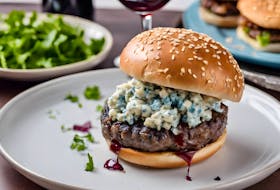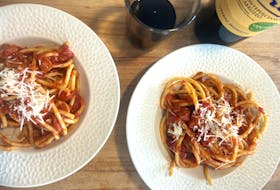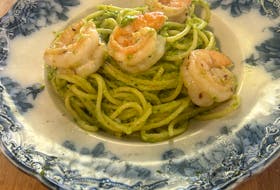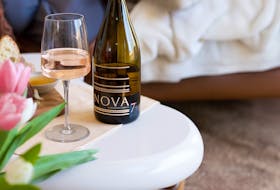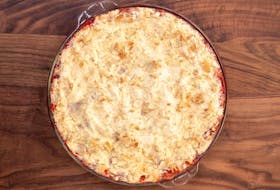Atlantic Canada’s rich fishing grounds have long been the source of a bounty of delectable ocean creatures.
Centuries ago, the Grand Banks attracted fishermen from across the Atlantic in search of a seemingly endless supply of cod. While cod stocks have been depleted, the jewels of this part of the Atlantic have become our crustaceans.
Over the last half century, lobster went from a poor man’s lunch to international delicacy and our local scallops have usurped their historic chowder-filler role to become a treasure of the Atlantic.
Nova Scotia is the home of the scallop, and at its epicenter is Digby, with 80 per cent of Canada’s scallop exports coming from this province.
While the popularity of scallops at home and abroad has led to increased demand, it has also led to innovation. Most scallops are harvested from the sandy gravel bottom of the ocean. In order to keep the scallops as fresh as possible, they are immediately shucked and flash frozen.
This ‘frozen at sea (FAS)’ technology may defy our sense of fresh, but it’s a necessity as scallop trawlers can be out to sea for weeks. The scallops are generally frozen within minutes of being plucked from the waters, before they go into a state of rigor mortis, which would lead to them have a tough texture compared to the soft, sweet, creamy texture we have come to love.

Five tips for buying scallops
- The scallops should be plump and meaty
- Smell your scallops. They should have an ocean fresh aroma.
- Avoid scallops that appear to be sitting in a pool of milk-like liquid. These aren’t fresh.
- Look for the FAS (frozen at sea) tag.
- Look the Marine Stewardship Council (MSC) certification. Scallops harvested in Nova Scotia are certified by this council which is one of the world’s eco-labelling programs for wild sustainable seafood.
Cooking options
So now you know how to pick out scallops, it’s time to cook them. Scallops can be cooked any number of ways. They can be poached, resulting in a soft, creamy scallop, and I enjoy scallop ceviche. Ceviche is a South American technique of curing fish my marinating them in fresh citrus juice. Of course, in Atlantic Canada the most popular way to eat them is pan seared. This technique creates a succulent, caramelized crust to the scallops.
Perfectly seared scallops in 10 easy steps
Chef Dwayne MacLeod, executive chef, Agricola Street Brasserie, CUT and Shuck Seafoood + Raw Bar, shares these tips on making perfect scallops

Directions
- Remove the adductor muscle from side of scallop.
- Rinse your scallops.
- Set on paper towels to extract as much excess water as possible.
- Just before searing, season scallops generously with sea salt.
- Place a cast iron pan over medium-high heat.
- Add a couple tablespoons of olive oil to the pan.
- When the oil just begins to smoke add the scallops.
- Add the scallops clockwise in a circle making sure to provide space between the scallops. This will allow you to know which scallops hit the pan first and therefore the order for flipping.
- Sear the scallops for one to two minutes on first side. The scallops should have golden crust. Add a tablespoon of butter to aid in the caramelization. When I see about 1/4-inch of colour penetrating the scallop, I know it is time to flip. Turn off the heat and let the scallops finish in the pan.
- Remove from the pan and set on paper towel to remove excess oil.

Scallops with Pea Mint Purée & Corn Salsa
Recipe by Mark DeWolf
- 4 Servings
Ingredients
- 2 cups peas
- 2 tbsp butter
- 1/2 cup mint leaves, loosely packed
- 1 tsp fresh lemon juice
- 16 large sea scallops, adductor muscle removed
- Sea salt
- 1 tbsp olive oil
- Corn salsa*, to serve
- 1 cup cherry tomatoes, quartered
- 1/2 cup pancetta, sautéed until crispy
- Microgreens, for garnish, optional
*To make a fresh corn salsa, steam four ears of corn. Remove the kernels. In a bowl, combine the corn kernels with the juice and zest of a lime, one minced Thai red chili, 1/4 cup diced red onion and 1/4 cup finely chopped cilantro. Season with salt to taste.
Directions
- Cook peas in salted, boiling water for three to five minutes. Drain and reserve the blanching liquid.
- Place the peas, one tablespoon butter, two tablespoons of the reserved liquid, mint leaves and lemon juice in a blender. Blend until smooth. Rinse scallops, pat dry on paper towel and season with sea salt.
- Place a cast iron pan over medium-high heat. Add the butter and oil. When the oil starts to smoke, add the scallops ensuring there is space between each scallop. Sear for one to two minutes per side until a golden crust is formed on outside and scallops are cooked. Remove scallops from pan and set on paper towel.
- Add pea mint purée to plates. Top with scallops, and a few tablespoons of corn salsa, equal amounts of pancetta and cherry tomatoes. Microgreens make a nice optional final garnish.

Perfect pairing
While a fragrant white wine is always a good pairing for this dish, I’d suggest Church Brewing Mayflower IPA, brewed locally in Wolfville, N.S.
It’s an IPA but brewed with a Norwegian farmhouse yeast strain (kveik), which helps elevate the tropical fruit tones of the beer and accentuates the beer’s fragrant, dry hopped finish. It’s a great beer for this dish, fish tacos an all sorts of summer cuisine.


